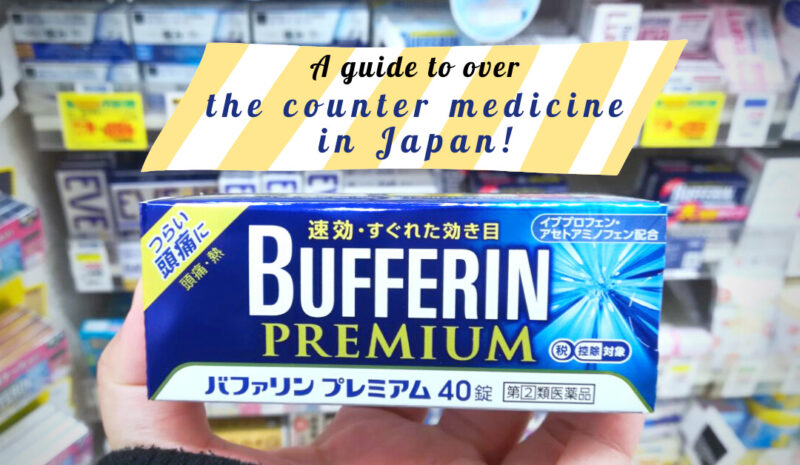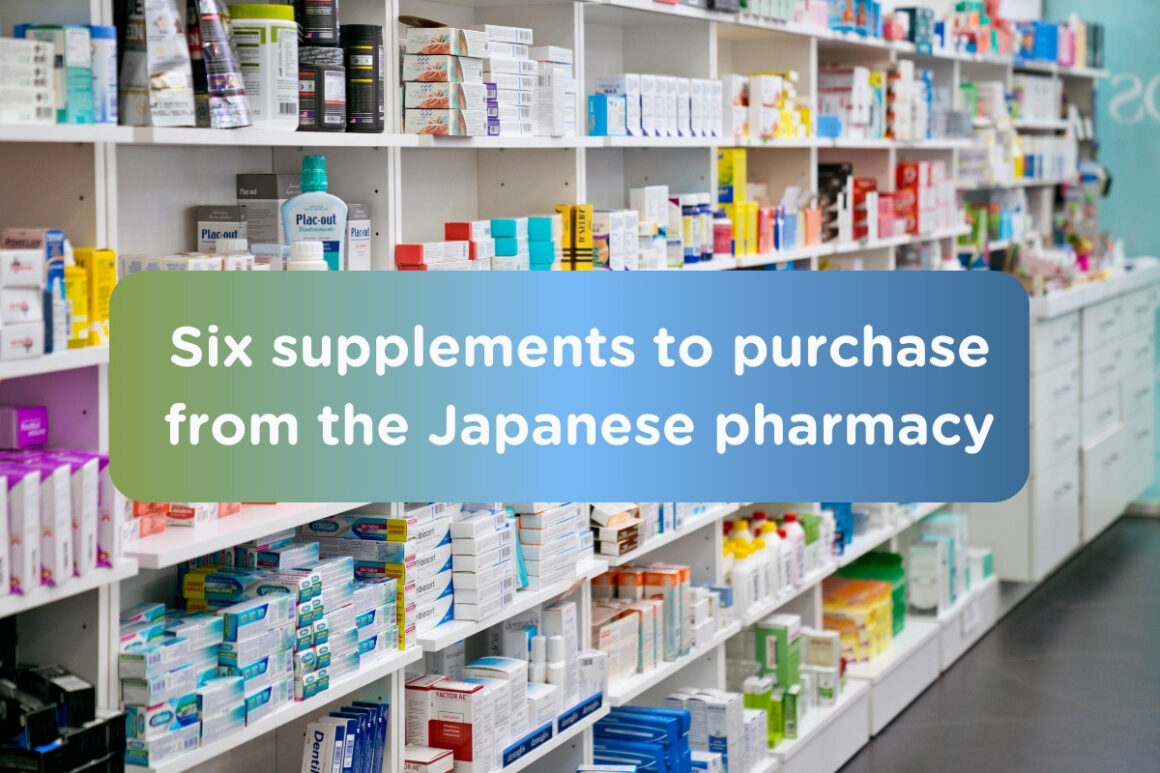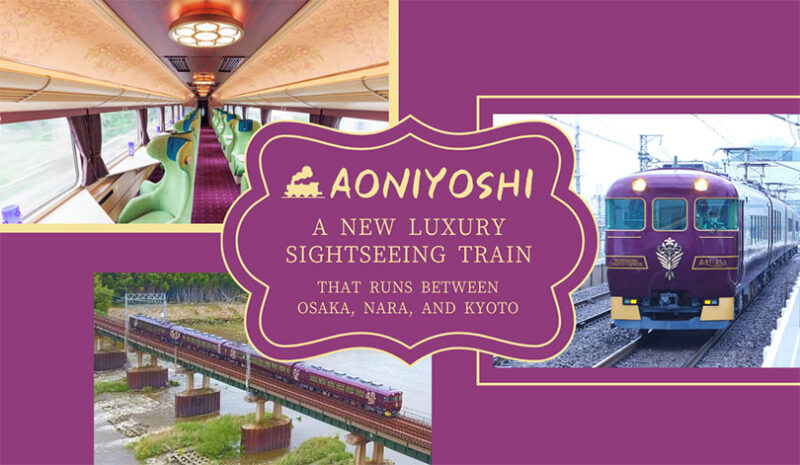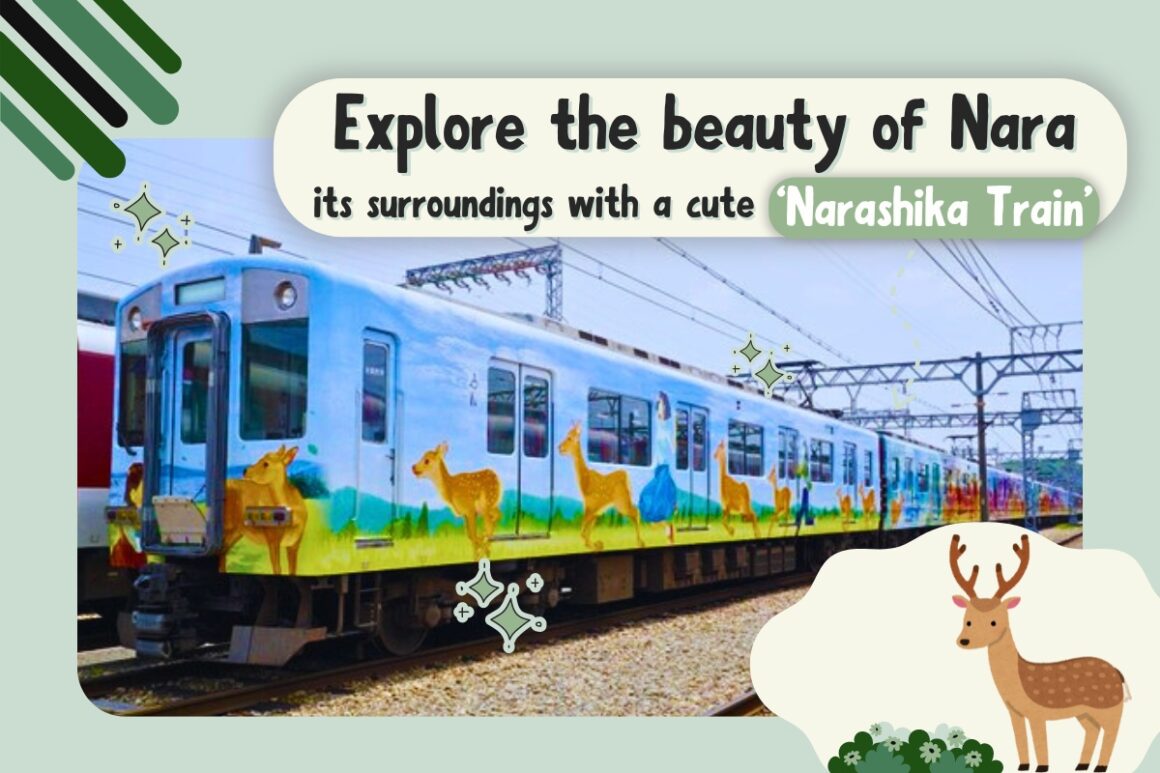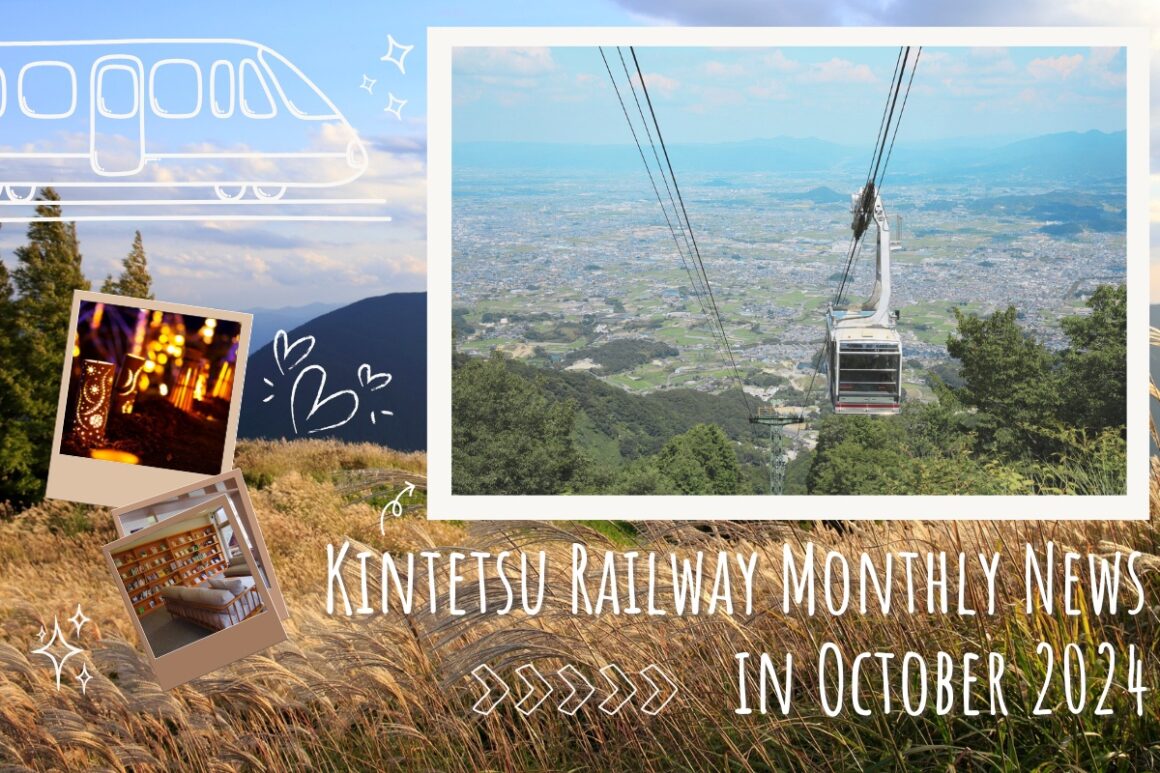Best fall foliage spots in Tokyo
Nov 09, 2022
Best fall foliage spots in Tokyo
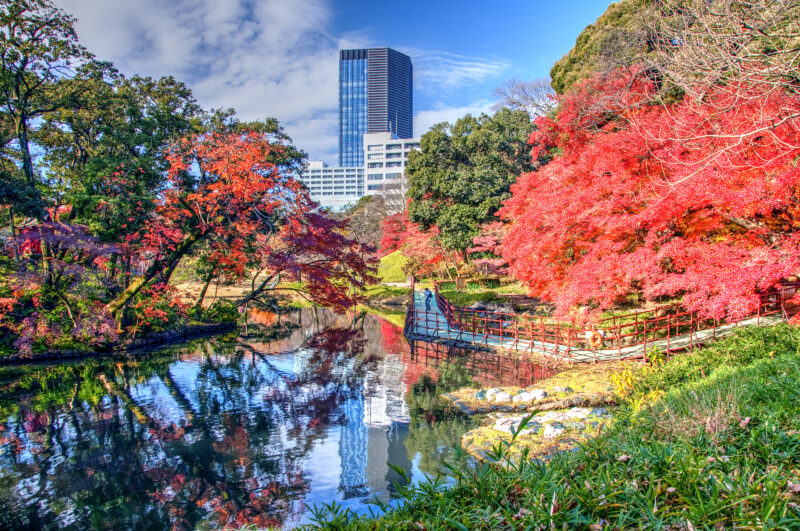
In addition to its beautiful cherry blossoms in spring, fall foliage is another reason for tourists to visit Japan, particularly for enjoying Kōyō (紅葉) and Momiji (紅葉) every year.
Although both are written in the same Chinese characters, Kōyō refers to foliage with red and yellow colors, while Momiji specifically refers to the spectacular view of red maple leaves in fall.
When traveling to Japan, most of the tourists certainly choose “Tokyo” to be their first destination. And “Fall Season” is also a popular time to travel here.
The fall foliage in Tokyo usually is at its peak from late November, and this feature will introduce some of the best spots in Tokyo where you can enjoy fall foliage.
Index : Best fall foliage spots in Tokyo
1. Hibiya Park
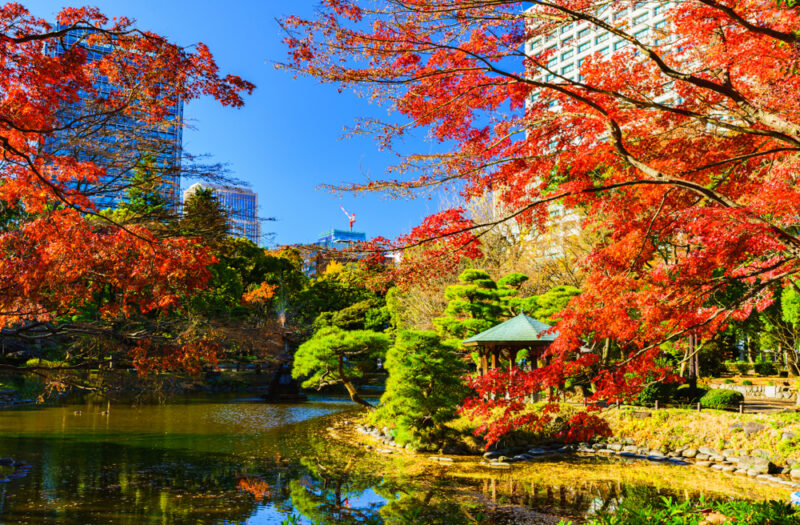
Hibiya Park is Tokyo’s first Western-style park opened in 1903. The park is famous for its beautiful flowers, blooming throughout the year in all sorts of different colors.
The park is such an oasis in the busy heart of Tokyo, and in fall, the park is best known for its ‘risky-ginkgo’. Risky ginkgo is the largest ginkgo tree in Hibiya Park, said to be between 400 and 500 years old.
The best time to visit this park is from late November to early December, when the risky ginkgo dominates the scenery with its hypnotizing golden leaves.
2. Meiji Jingu Gaien
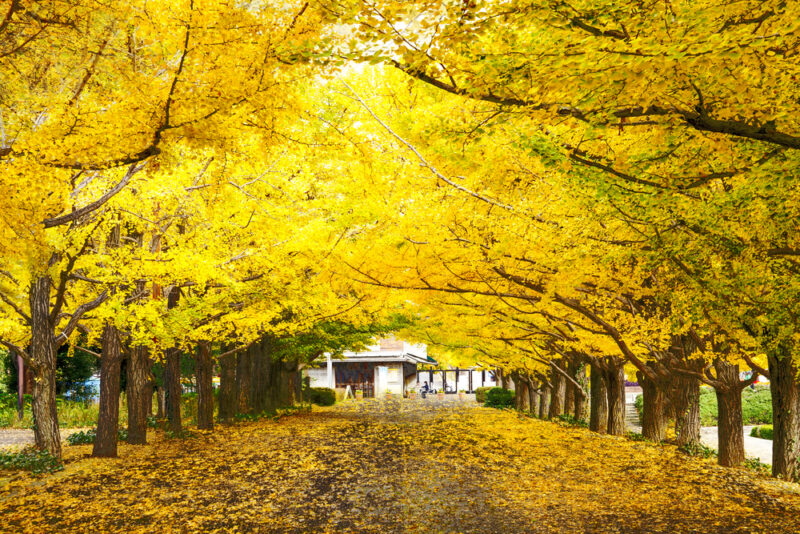
Meiji Jingu Gaien is one of the most popular fall foliage spots in Tokyo, so when you search for pictures about fall in Tokyo, this spot will immediately come up. This spot is a 300-meter-long avenue, stretching from the Aoyama Nichome intersection to the outer gardens of the Meiji Shrine.
There are around 146 trees lining the avenue, creating a stunning tunnel of gold all towards the shrine gardens in fall with their golden leaves. The best time to visit this spot is from mid-November to early December.
3. Shinjuku Gyoen National Garden
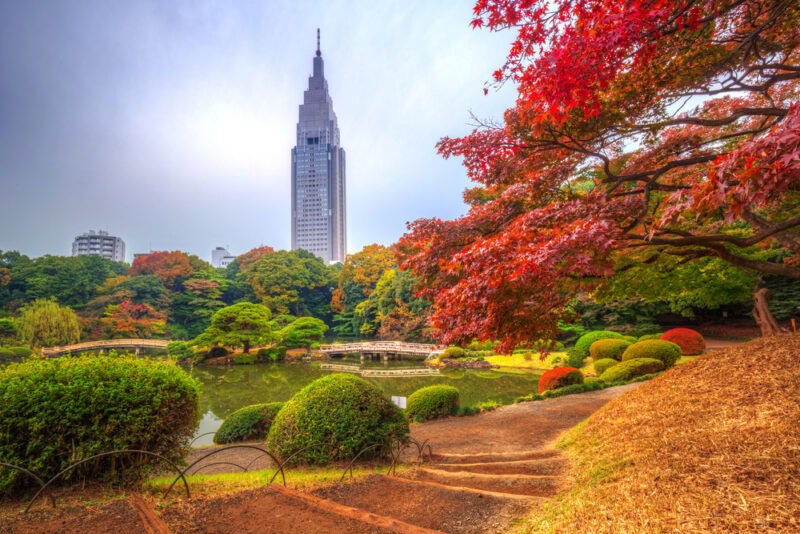
Shinjuku Gyoen National Garden is one of the biggest gardens in Tokyo, with an area of 58.3 hectares (133 acres) and a circumference of 3.5 kilometers. The garden is known as one of the best spots for both cherry blossoms and fall foliage spots in Tokyo.
Unlike other gardens, Shinjuku Gyoen National Garden is famous for its three different gardens combined into one beautiful park. Its Japanese Garden will hypnotize you with its deep red maple leaves, while its British Garden will shimmer in ginkgo gold leaves. On the other hand, its French Garden presents a romantic image of the fall in Europe, offering you unique and breathtaking spots for fall foliage photos.
The best time to visit this park is from mid-November to mid-December to enjoy the most out of its unique sceneries.
4. Rikugien
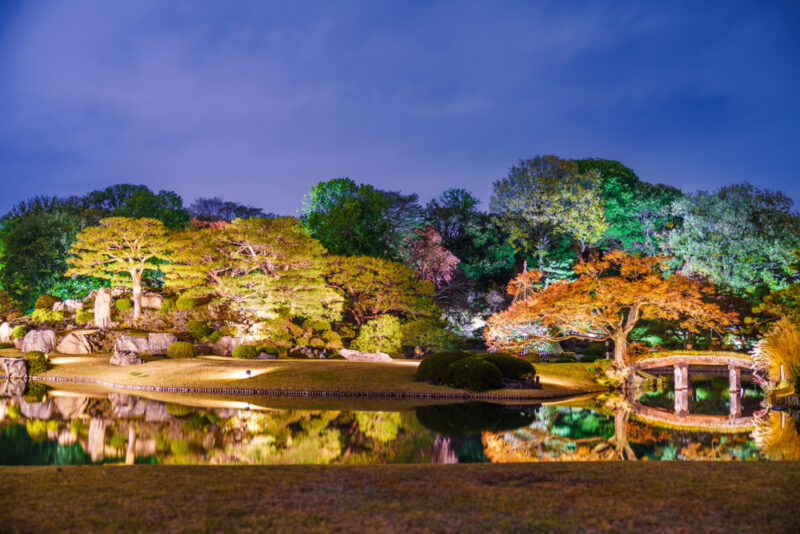
Completed in 1702, Rikugien is known as one of Tokyo’s oldest Japanese gardens, built specifically for the 5th shogun of the Tokugawa clan. It took seven years to complete this gorgeous Japanese garden, which is also home to over 400 individual maple trees, along with many ginkgo and zelkova trees.
One of the best ways to enjoy the fall foliage in this garden is from its small beautiful tea house, where you can enjoy eating wagashi (Japanese traditional sweets) and sipping Japanese tea.
The best time to visit this garden is from mid-November to early December, particularly in the evening when the trees are lit up, creating a mesmerizing fall scenery.
5. Koishikawa Korakuen Garden
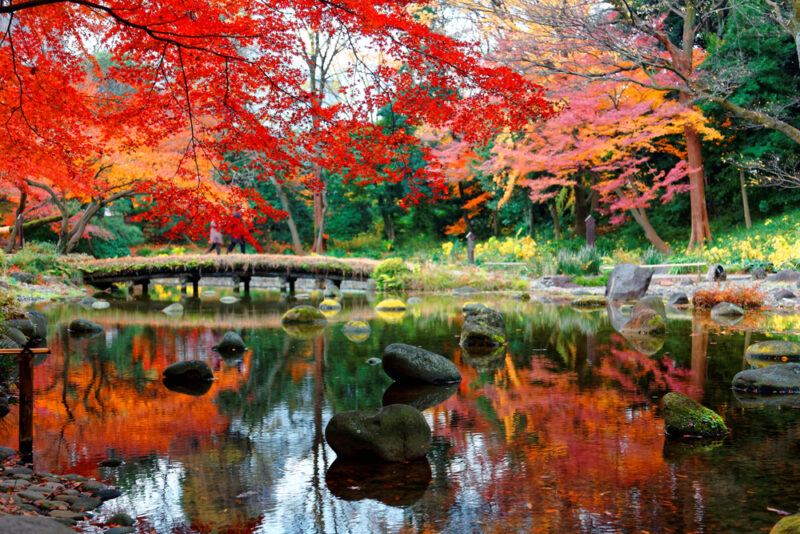
Koishikawa Korakuen Garden is known as one of the oldest gardens in Tokyo, and it was built by the Tokugawa lord of the Mito domain in early Edo period as a circular-style garden.
The garden features both a pond and a hill surrounded by numerous trees that change color in fall. There are two viewing spots to visit in the garden. The first one is along the Oigawa River that resembles Kyoto’s Arashiyama, and the second one is the Togetsukyo bridge behind the Kantoku pavilion, which is best known for its breathtaking vivid maple trees.
The best time to visit this park is from late November to early December, when Japanese maple, wax trees, Japanese zelkova, and ginkgo trees beautifully change color.
Read more articles
- Best fall foliage spots in Osaka
- Best fall foliage spots in Kyoto
- Best fall foliage spots in Hokkaido
